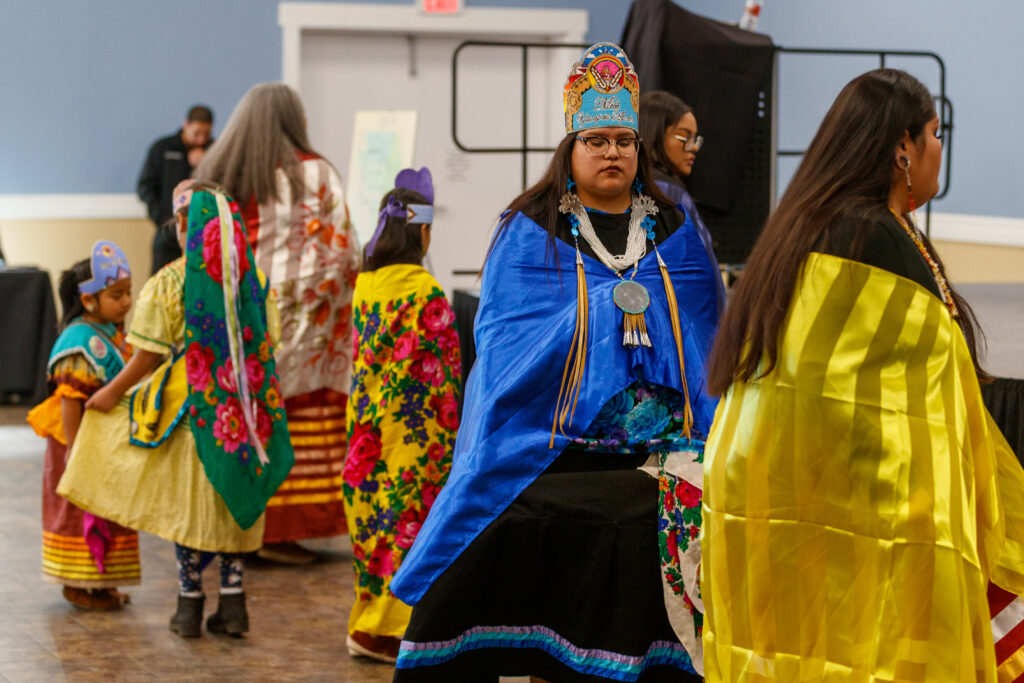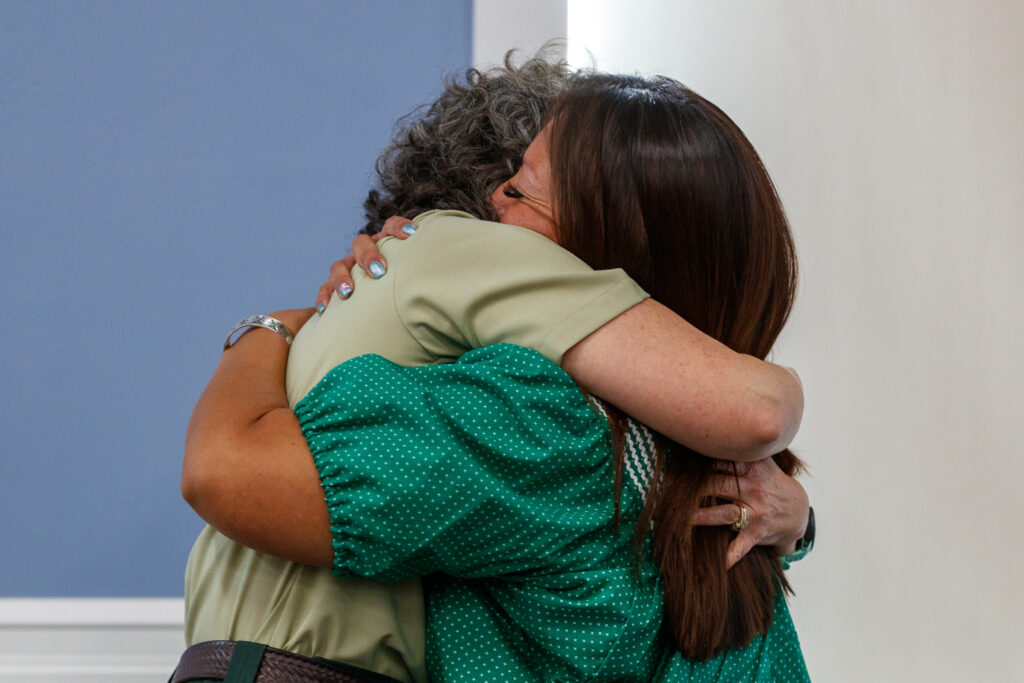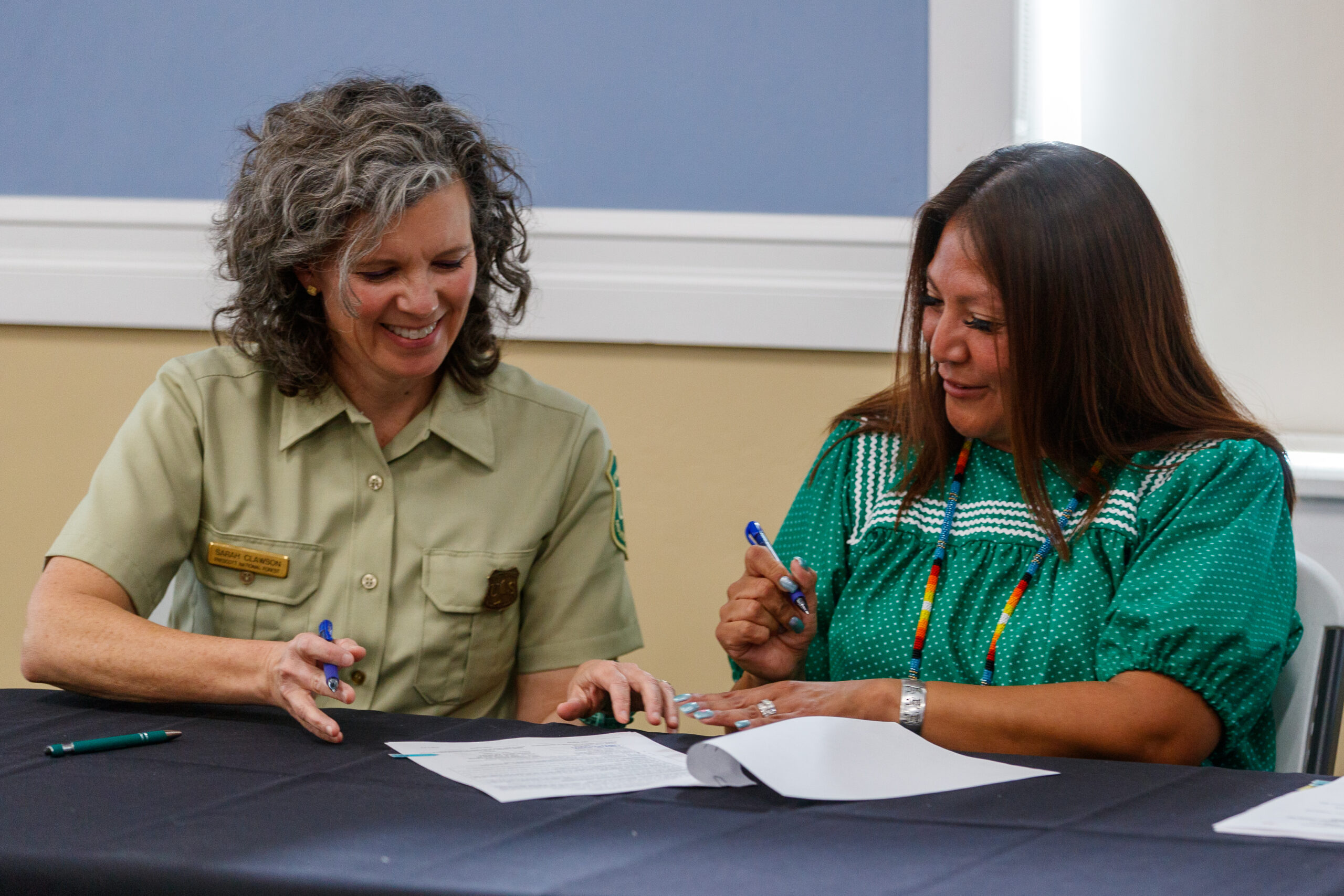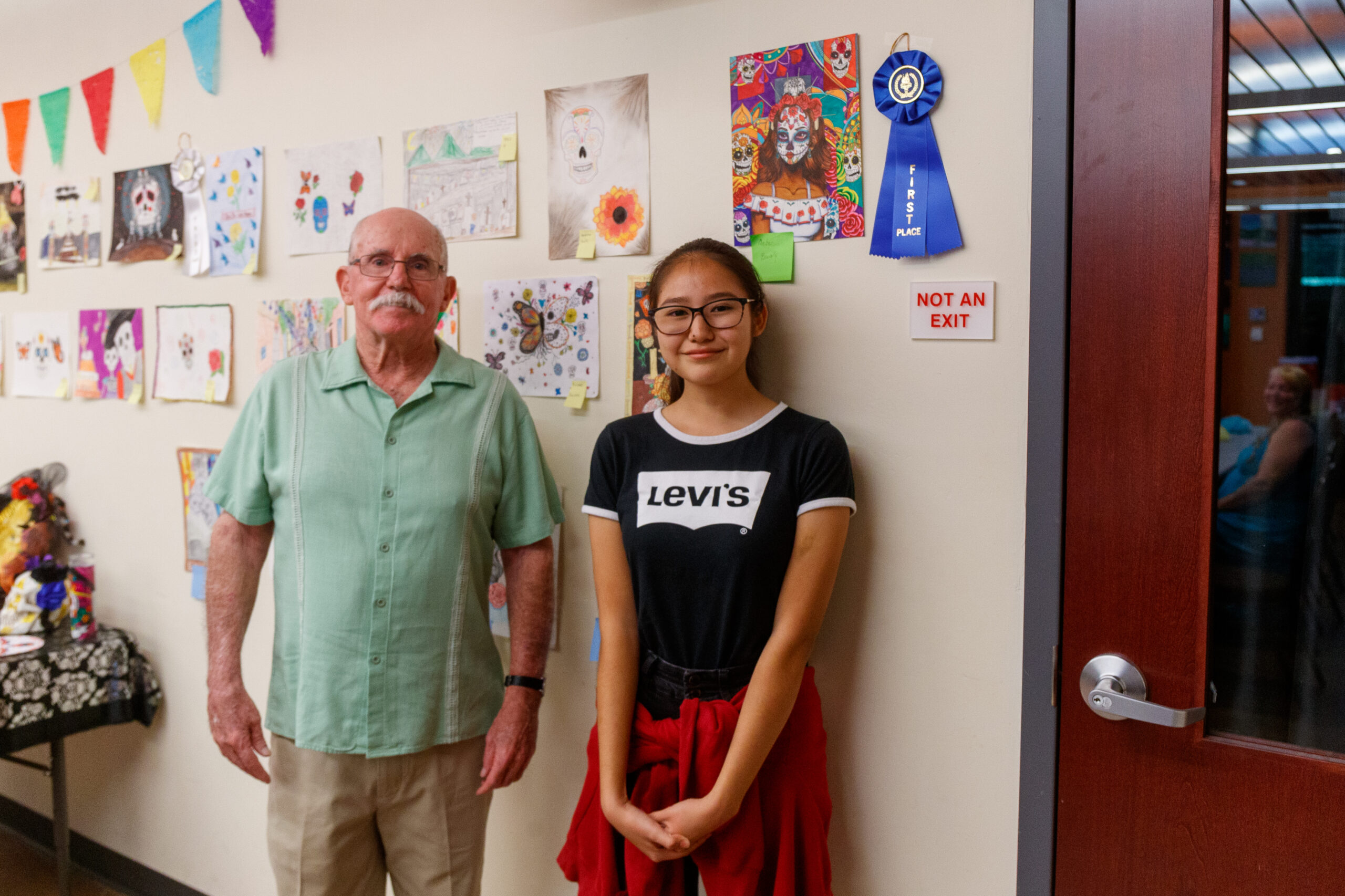The Yavapai-Apache Nation and U.S. Forest Service held a signing ceremony at the Tunlii Community Center on Monday, Nov. 4, to commemorate the transfer of 4,782 acres of tribal land within the Prescott, Coconino, Kaibab and Apache national forests to the USFS in exchange for 3,201 acres of federal land adjacent to current National lands. With a stroke of the pen, the Nation’s holdings grew from 1,810 to 5,011 acres.
The Nation began purchasing privately-owned parcels of land within the national forests beginning in the early 1990s with the goal of eventually exchanging those for local land held by the USFS.
“Over time with the growth of local communities … these federal lands have lost much of their character as wildland forests,” a Y-AN press packet stated. “Two of the smaller parcels are isolated from the main body of National Forest lands, making USFS management difficult.”

“Today is not the end. It’s the beginning. It’s the beginning of a future, and we’re going to capitalize on it,” recently-elected Tribal Council member Buddy Rocha Jr. said. “We’re going to grow, we’re going to continue to expand our lands, we’re going to build more homes, we’re going to provide more opportunities, and we’ll still have that fortitude to keep growing.”
“The council and the people will have an opportunity to exercise their self-determination in ways that they haven’t in the past,” Yavapai-Apache Nation attorney Scott Canty said.
Canty added that without the exchange, the Nation would be out of available land after the completion of the Yavapai-Apache Homes VIII housing project.
“It will allow people who want to come home to come home, and so the social heritage will be bolstered by this exchange,” Canty said.
The largest area of land acquired by the Nation in the exchange is a 1,726- acre parcel referred to as the “Lower 260 Parcel” that starts in the area of W. Horseshoe Bend Drive and extends south parallel to State Route 260 as far as Interstate 17.
“Overall, the SR 260 corridor is desirable for future growth,” the Y-AN website states. “However, despite its overlay zoning, there is a lack of sewer capacity restricting growth along the northwestern portion of the Lower 260 Parcel. This lack of infrastructure poses a serious challenge to future development and there is no resolution in the near future.”
“I almost have to say this also, is that the land we’re getting is not that nice,” Tribal Council member David Kwail said. “It’s going to take a lot of work to make it nice like we did here in Middle Verde, our Tunlii. That looks great. All the homes, the building, people living, working … and now we’re prospering. With the Forest Service getting more land, we’re going to develop. It’s going to take money … Give us a little time. It’ll happen for all of us.”

The “Upper 260 Parcel” consists of 391.64 acres located north of State Route 260; Old State Highway 279 runs through the parcel. Three parcels totaling 725 acres, referred to as the Middle Verde A, B and C parcels, are located north of the intersection of Interstate 17 and the Middle Verde Road. These parcels contain several areas of cultural significance for the tribe, including the 3.5-acre historic Yavapai-Apache Nation cemetery.
Another set of parcels totaling 238 acres are located south of exit 289 off I-17. The area has been designated the Pecan Lane Character Area by Camp Verde.
“The Pecan Lane Character Area is defined by a row of pecan trees planted in 1927-28 which is designated on the National Registry of Historic Places as a rural historic landscape,” the Nation’s website states. “The pecan trees are located further to the south along the Montezuma Castle Highway … The Pecan Lane Character Area includes zoning for agricultural, residential, light commercial and heavy commercial, open space and public facilities for future land use.”
“The location of that land is excellent,” said Tom Binnings, a member of the executive board of the Verde Valley Regional Economic Organization. “It’s a gateway to Camp Verde … so it can benefit both from the regional market of Verde Valley, plus the pass-through or traffic market of I-17, and may create opportunities for new companies to locate, especially distribution-related … I’m excited and think that this is probably the greatest economic event for the Verde Valley in a very long time.”
The “Cedar Ridge Parcel” includes 118.92 acres and was described by the USFS as an “orphan” piece of Coconino National Forest land, since it had become surrounded by private land. The parcel consists of the “West Piece” of 79.64 acres, which is accessed from Brocket Ranch Road, and the “East Piece” of 39.28 acres nearby that is surrounded by private land and has no road access.
In June 2022, the Nation and the Town of Camp Verde signed an intergovernmental agreement that includes a tax-sharing arrangement between the tribe and the town. Any non-Nation development in a designated portion of the newly-acquired lands will pay a portion of its sales taxes to the town of Camp Verde.
Camp Verde Town Manager Miranda Fisher said that she had no estimates of how much revenue the exchange could bring to the town.
“Obviously, they’re looking at housing. We’re not sure what from a retail perspective they’re looking at, and so it’s hard to really project that without seeing their plans,” Fisher said. “I know that they’re going to stay in touch with us and keep us in the loop [about] their plans. That’s wonderful because they don’t have to. It’s not like they have to pull permits in the town.”
Tribal Council Vice Chairman Ricardo Pacheco said that the tribe doesn’t currently have plans to develop the newly-acquired land.
“We got to look at the infrastructure, see what’s out there, see what we can do. It’s still going to be years in the making to develop over there or do what we want to do,” Pacheco said.



